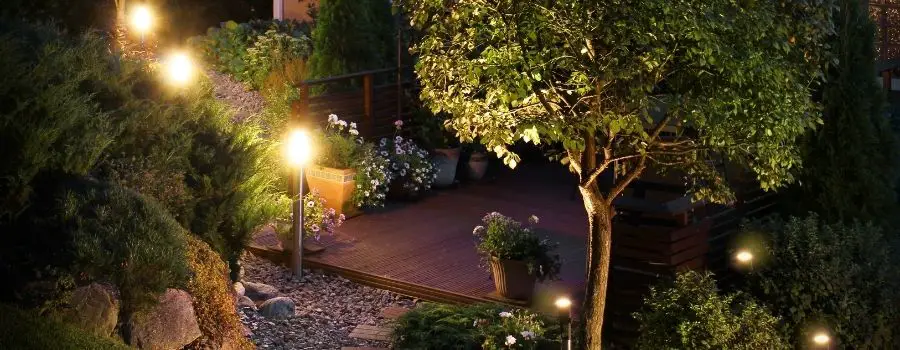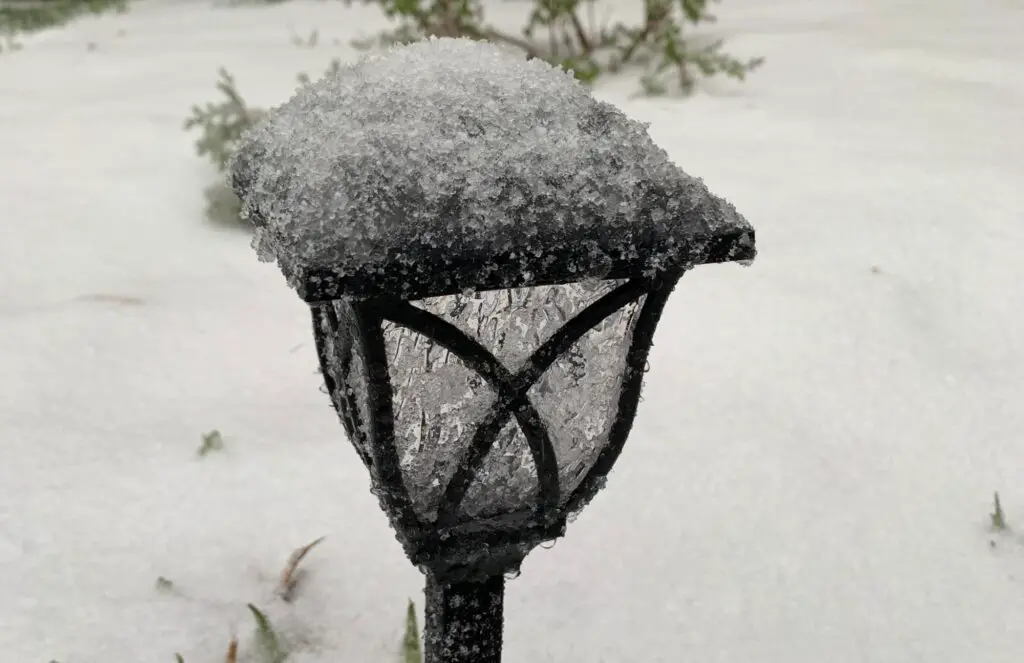Solar lights are a great way to save on energy costs and help the environment. They can make your backyard a cozy gathering place for family and friends. But, like any piece of technology, at some point you may start having some problems…namely, why do solar lights stop working at night?
In general, solar lights will stop working at night if the built in battery isn’t fully charged. This will usually happen if the solar cells are dirty. Another issue might be if the photocell is damaged and can’t detect when it’s dark outside.

There are a few things you can do to clean or replace the photocell and get your solar lights working again:
- Clean the photocell with a soft cloth. If it’s particularly dirty, you can try using distilled water or rubbing alcohol.
- If the photocell is damaged, you will need to replace it. You can purchase a replacement photocell from most hardware stores.
- Make sure the solar lights are getting enough sunlight during the day. If they’re not, they won’t have enough power to last through the night.
On the other side of the coin, if you have solar lights that are staying on during the day, then you will want to check out this article.
What Can Cause Solar Powered Lights To Stop Working At Night?
In addition to dirty solar panels or damaged photocells, there are other issue that can cause your solar powered lights to stop working:
- Loose Wires
- Faulty Batteries
- Incorrectly Placed Solar Lights
- Broken Light Bulbs
- Lights Are Not Actually Turned On
- Battery Tabs Haven’t Been Pulled
- Water Damage
- They’re Worn Out
Loose Wires
Most solar lights will have small solar panels located on their tops, but others are wired up to a separate solar panel that can be mounted on a fence or other sun rich area . If this wire becomes loose or broken (wear and tear over time, animals chewing on them, etc.) then the batteries won’t receive a charge.
Even solar panel’s with built in solar cell’s have internal wiring that can become damaged, leading to solar lights ceasing to work properly.
Faulty Batteries
Solar lights rely on batteries to store power so they can work at night. Over time, batteries will lose their charge, a phenomenon known as “self-discharge.” This is normal and expected, but if you find that your solar lights are not working as well as they used to, it might be time to replace the batteries.
As batteries age they start to experience “memory loss,” which means they begin to lose their ability to charge back up to 100%.
You can usually tell if the batteries are not working properly if the solar lights are flickering or dim.
Incorrectly Placed Solar Lights
Make sure to place your solar lights in an area that gets direct sunlight for most of the day. During winter months, you may need to move them around as the sun’s position changes.
If your solar lights are in a shady spot, they won’t be able to absorb enough energy during the day to power themselves at night. Again, winter months usually have longer hours of darkness, so it’s possible the battery on your lighting won’t have adequate capacity to work through the night.
Broken Light Bulbs
Just like any other type of light bulb, solar light bulbs can break or burn out over time. The good news is, they’re usually pretty easy to replace.
Most solar lights use LED bulbs, which last much longer than traditional incandescent bulbs. However, they can still break and will need to be replaced eventually.
Lights Are Not Actually Turned On
This one seems pretty self explanatory, but it’s worth checking if your solar lights have an on/off switch and that they are in fact turned on.
Most on/off switches are located on the underside of the solar light, but sometimes it can be located on the top (rare) or side.
Battery Tabs Haven’t Been Pulled
If you just bought your solar lights, it’s possible that the little plastic tabs that prevent batteries from discharging during shipping haven’t been removed yet. These need to be pulled out before the batteries will work.
usually, these tabs extend outside of the lights casing for easy access, but in some circumstances you many have to open a door or hatch to access the tab and remove it.
It’s also possible that there is no tab, but the battery is either not yet installed or has been installed upside down. This isn’t a common practice anymore, but you still may run across this.
Water Damage
Solar lights are designed to withstand some weather, but they are not waterproof. If your solar lights have been damaged by water, it’s possible that the wiring has become corroded and needs to be replaced.
You can tell if your solar lights have water damage if they have rust on them or if the glass is cracked or broken.
Worn Out
Like anything else, solar lights will eventually wear out. If your lights are more than a few years old, it’s possible that they just need to be replaced.
The good news is, solar lights are relatively inexpensive and easy to find. You can usually find them at your local home improvement store or online.

Troubleshooting Solar Lights
A good rule of thumb when troubleshooting anything is to always start with the easiest thing first. Usually, the easiest problem will also be the quickest and least expensive thing to fix.
For solar lights, you will want to start by making sure the solar panels are clean and facing the sun during optimal times of the day…usually noon to 5:00 PM.
Next, check to make sure the battery is in good shape, plastic tabs have been removed (for new lights) and that the bulb isn’t broken.
If you’ve tried all of these things and your solar lights still aren’t working, it might be time to replace them. Of course, if you’re feeling adventurous you might want to try opening the light up to see if there are any easy repairs that can be made.
Final Thoughts
Solar lights are a great way to add light to your yard or garden without having to worry about running extension cords or increasing your electric bill.
However, like anything else, they can stop working for various reasons. Luckily, most of the time the problem is an easy fix and doesn’t require a lot of time or money.
And if you find that you need to replace your lights, there are several options available, none of which are particularly expensive. I’ve listed a few of my favorites in the green box below.

